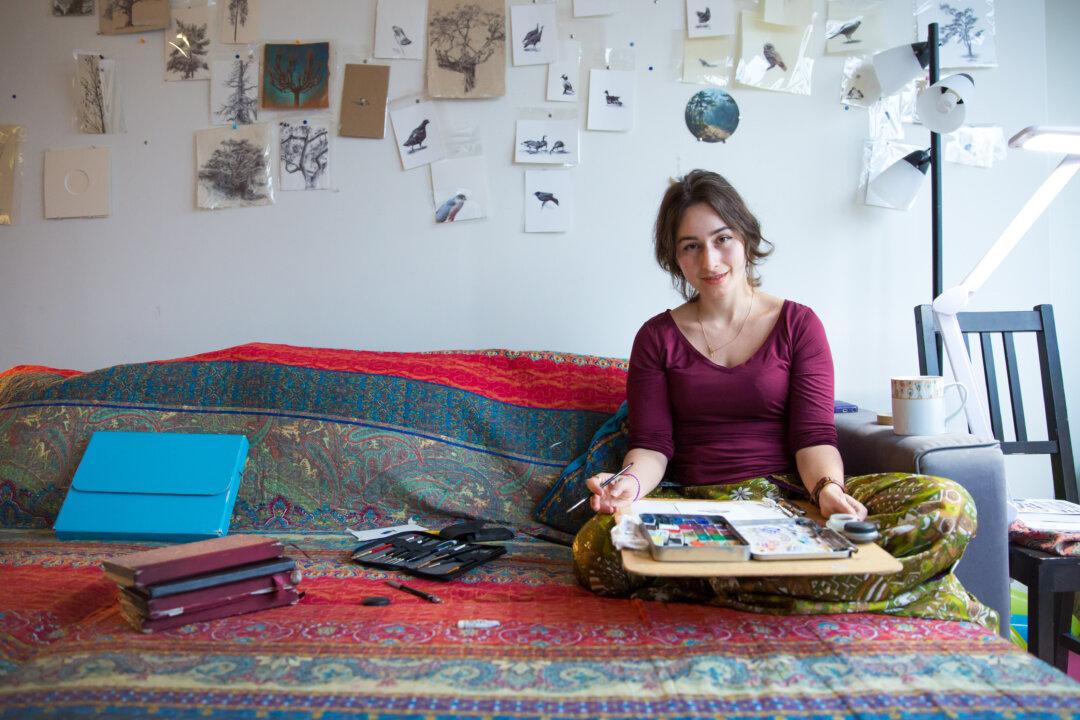NEW YORK—She’s on an endless search, along an endless road. She returns to it again and again, each time resuming her journey at a different spot on the map. It may seem like an escape from convention, but for Dina Brodsky, painter of miniatures, such wandering is what feeds her creative process.
“I don’t have very many new ideas [for new bodies of work]. I have one idea every year or two, and all of the ideas that I’ve had have been [when I’m] alone on a bicycle in a different country,” she said at her home in Long Island City, with a spectacular waterfront view of Manhattan.
Sitting on the corner of her couch, Brodsky painted a bird on a little piece of watercolor paper. Birds are good for transitions from one project to the next. “Every time I don’t know what I am doing, I paint a bunch of birds,” she said. “It’s also something I can do during a toddler nap.”






